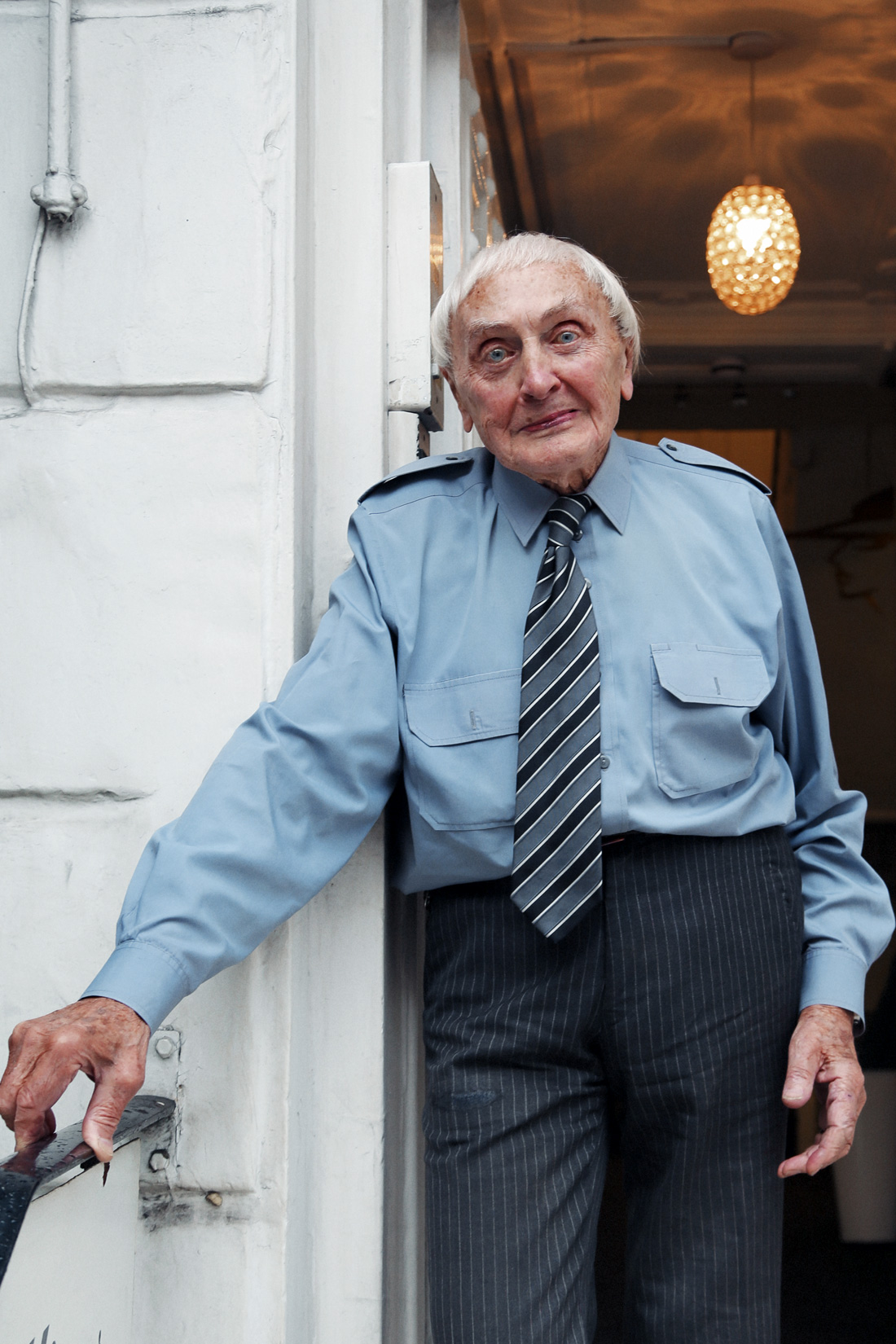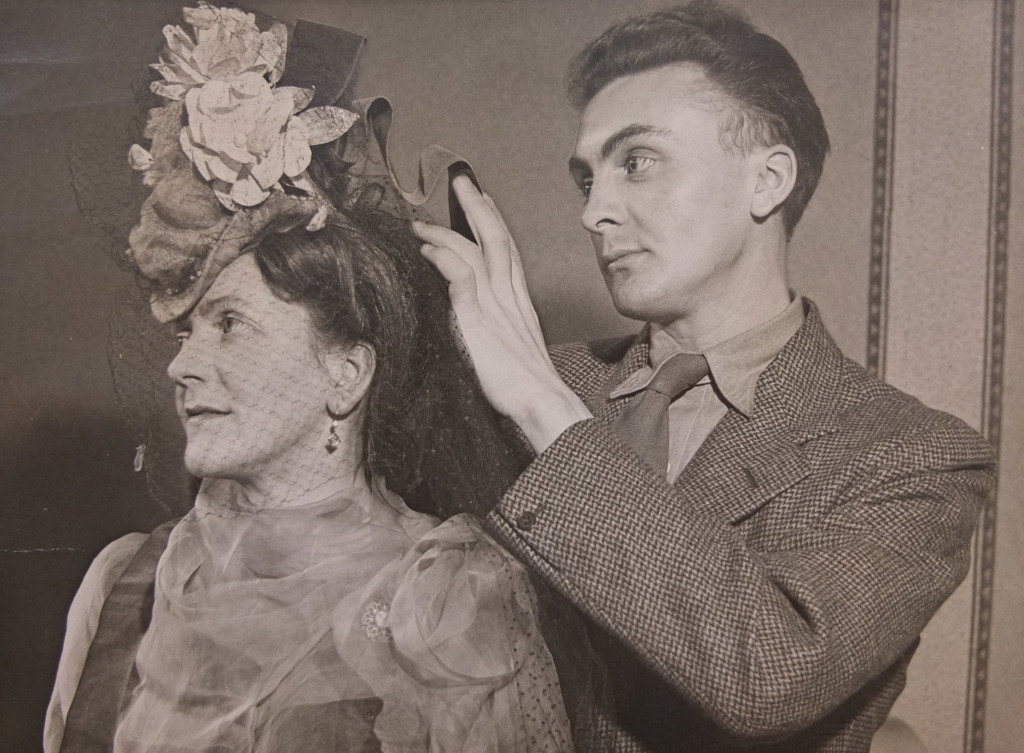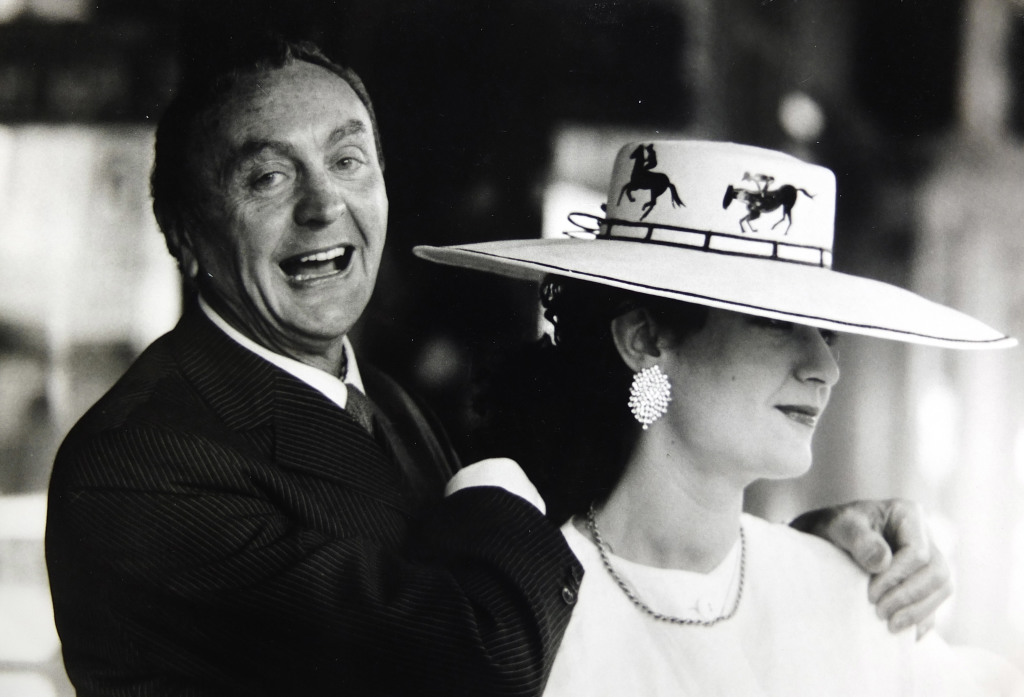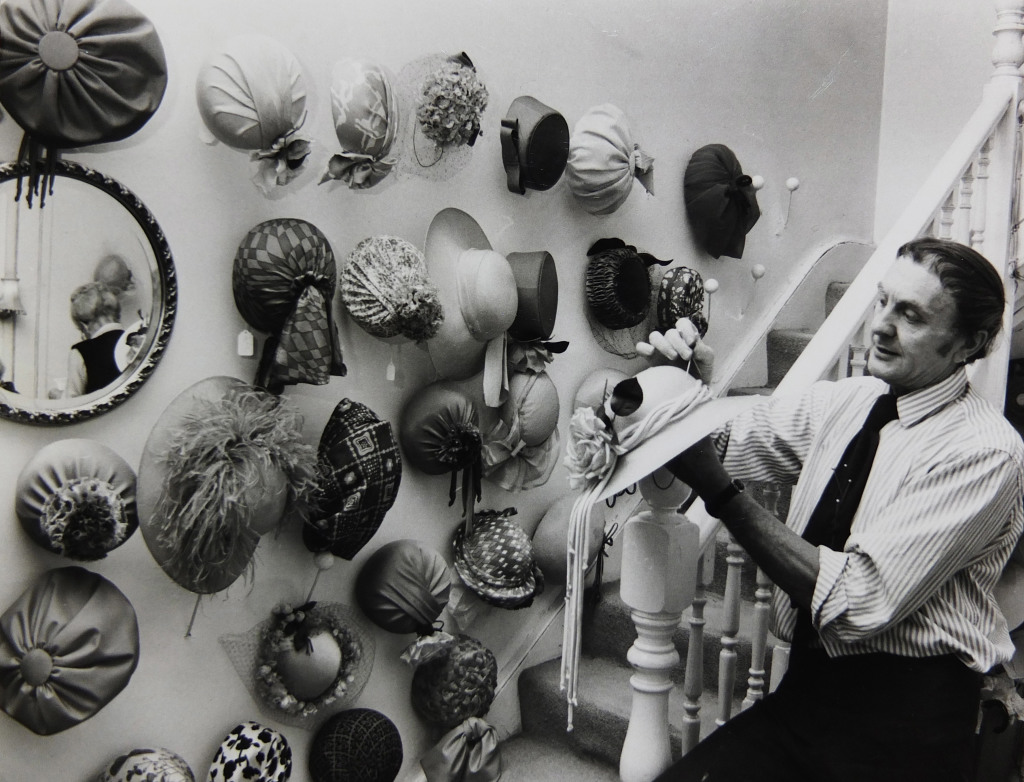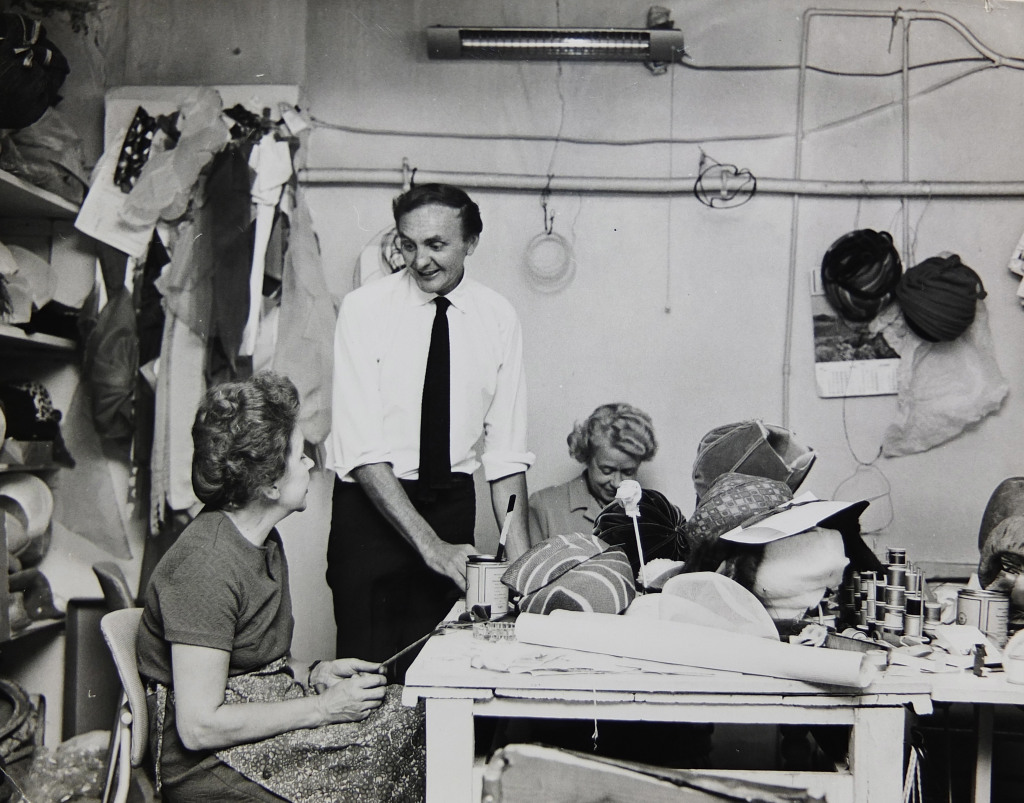A true gentleman of fashion.
Contemporary millinery is considered almost uniquely British and in recent years the UK has eclipsed fashion cities like Paris as the home of the hat. Increasing more designers are turning to millinery and starting businesses that push the boundaries of what headwear design can be. Mr. Boyd, based at Beauchamp Place, could be considered the godfather of them all with a career spanning an incredible 70 years. It’s impossible not to warm to the milliner. He oozes humility despite counting royalty and celebrities among his clients-base. Mr. Boyd, as he likes to be known, is what the fashion industry is really all about. He lives and breathes his work. Each hat is imbued with passion and he is revered within the millinery world probably as much for his personality as he is for his intuitive skills. As Mr. Boyd is about to receive an MBE for contributions to the fashion industry, NUIT Magazine visits the master in his Knightsbridge shop and studio to observe him in action.
Slim in stature, Mr. Boyd is impeccably dressed in a smart blazer with shoulder lapels, jumping up to greet us as we enter his treasure trove of hats. Doubling as a shop and atelier, hats are perched everywhere, lining the walls like jewels in all shapes and colours of organised chaos. Sitting in his seat, side on to the huge studio workspace swimming with hat blocks, he watches everything and misses nothing. Without skipping a beat, he peppers our conversation with technical advice for his assistants, which seems to role off his tongue. The mutual respect between them is striking but then again I’m sure working for Mr. Boyd is not your average design role. The working day must be as full of technical training as his fascinating stories and encounters.
Clients are integral to the craft and Mr. Boyd has had no shortage of notable visitors. Traditionally based on recommendation, the milliner was often introduced into a family and stayed with that family, extending his client base over time. This might explain why John Boyd Hats has gone somewhat under the radar in the fashion world, preferring to let business come to it rather than court publicity. He has had more than his fare share of publicity, namely due to one of his most famous muses, Lady Diana Spenser formerly the Princess Royal, Princess Diana. How exactly did a young boy from a post-war Scottish village end up designing hats for royalty?
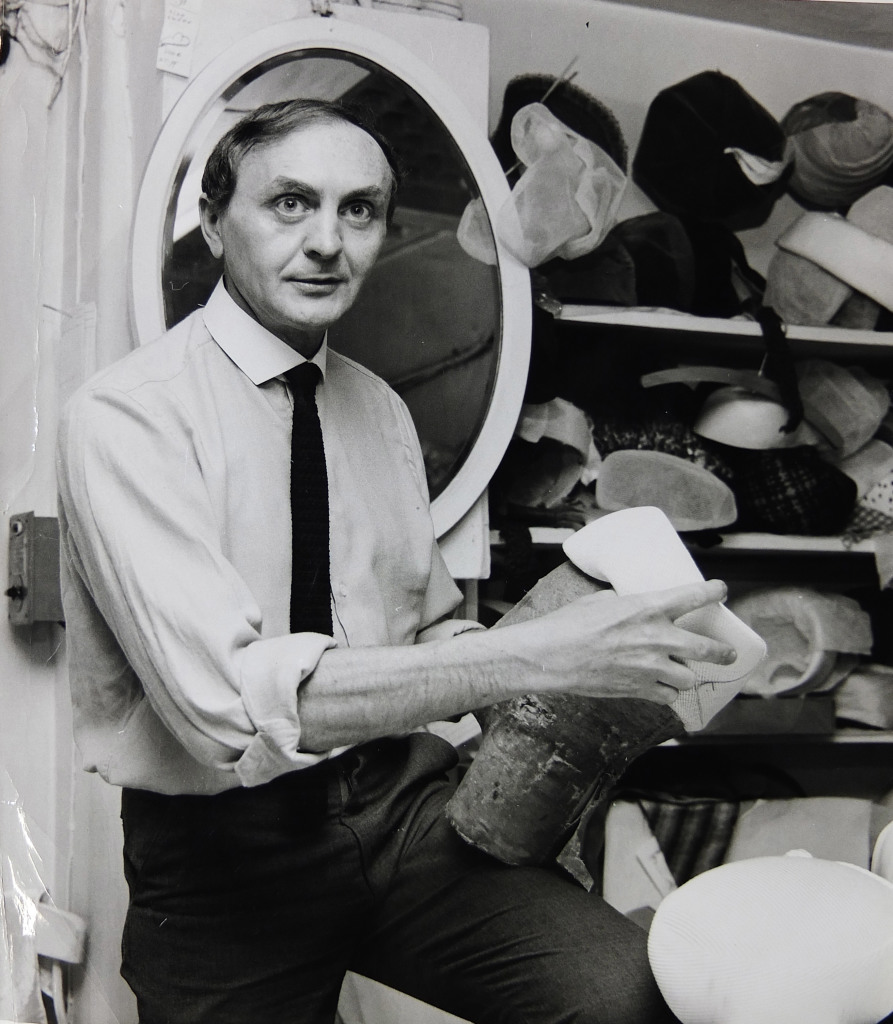
In 1939, the world went to war and Mr. Boyd found himself working in a rubber factory which developed products to facilitate the effort. By great coincidence, during this time society lady Heather Van Altena also found herself there too, having joined the workforce like many women during World War II. The only problem was that Van Altena was a lady of leisure that had never worked a day before in her life. Mr. Boyd became her official helper – doing all her work for her. Upon catching him sketch out of boredom, Van Altena proclaimed he was wasting his time in rubber and thus an unlikely yet lifelong friendship was born. However before she could introduce Mr. Boyd to the fashion world, there was the minor thing of the Normandy Landing to take part in. It is really staggering to think that the delicate designer who sits here today joined the army at the age of 18 and worked as a signaler during the longest amphibious invasion of the war. With 37 marines on board a small ship, he recalls the deafening noise of the cannons reverberating throughout the metal vessel. While this offensive was costly in manpower, as good luck would have it, his boat was guided by dolphins which swam in front of the ship and kept them out of the path of deadly mines.
Perhaps it was the brutality of war that made Mr. Boyd escape into the fantasy of fashion. He arrived in a post-war London, which although ravaged, was full of possibilities. Working under the tutelage of acclaimed Danish milliner Aage Thaarup, a position organised by Van Altena, Mr Boyd learned his wide and unrivaled range of techniques and millinery skills. At a time when millinery was flourishing, a profession that previously Mr.Boyd didn’t even think existed, he found himself making hats for the milliner to the Queen, no less. Later, Mr. Boyd set up his own studio and started developing the styles and shapes which would become his signatures over time. He built up not only his own language of design, but also his client base. What was initially instigated by a chance meeting resulted in a lifelong career and devotion to the fashion industry.
While anyone can wear and be noticed in a hat, which is the power of millinery so harnessed by celebrities, not everyone can single-handedly spearhead a revival. This is what happened in the 1980s when a young teacher got engaged to His Royal Highness Prince Charles. Mr. Boyd was her milliner of choice; making among other pieces the hat she wore for the Royal Christening as well as her ‘going away’ hat post the wedding. Having made hats for Diana’s grandmother, Mr. Boyd speaks very fondly of the former Princess who visited his studio with a bodyguard she was always eager to dispense of. She would sit with the work-girls upstairs, as his staff fielded press enquiries downstairs. ‘Even though she had everything, she noticed and appreciated the smallest things. She saw beauty in everything’.
At the time, she often favoured Edwardian styles, with tricorns and feathers in shapes that were slightly masculine, recalling the theatrical ‘principal boy’ look. While this seems at odds with her vulnerability, Diana understood the nuances of millinery. She knew how to use a brim or veil to balance the face as well as the effect they had on movement and poise. During that decade, the millinery industry was so under-resourced and understaffed that it could barely keep up with the demand she inspired. Her iconic Ostrich feather hat was copied worldwide and as cheap imitations flooded the market, the milliner failed to keep up. Even ostrich farms in South Africa felt the Diana-effect.
Another female client playing with femininity in a masculine world was Baroness Margaret Thatcher who wore hats for far more formal reasons such as Presidential meetings. She was not always the Iron Lady, especially when it came to her husband Dennis. Mr Boyd recalls her hiding the exact amount of her purchase from him. The Bonham Carter family have also been notable clients over the years but Princess Ann, another longstanding client, also a firm favourite. As one of the most adventurous royals in her choice of hats, she was willing to take risks, regardless of the results. Mr. Boyd recalls making hats for her numerous trips worldwide and how she was the perfect muse for his often-humorous creations. His most playful design for her included fake butterflies on piano wire, which appeared to flutter and bounce as she moved.
Yet behind the humour, his hats often play with history. His ‘Spam Hat’ made for Roosevelt’s statue was part of the 2012 Hatwalk event, which coincided with the London Olympics. With a strong personal connection as well as historic, the hat references the large shipments of spam, a product that acted as a meat supplement during the War. Spamalot the musical premiered in London during the War with the leads played by the American Army. Inspired by the two Mr. Boyd designed the ‘Spam Hat’. Where the ingredients would normally be found on a tin, Mr. Boyd placed the lyrics while the hat brim alluded to the jagged opening of a metal tin. Displayed outside and weatherproof, the hat illustrated the milliner’s continued engagement with innovation. Knowing better than his critics, even the London drizzle couldn’t deter the flounce of the fantastic ostrich feathers that just like in nature seemed to thrive in the bad weather.
Looking through his photographs is like seeing history unfold, from dramatically changing hemlines to radical hairstyles. As the decades pass by it’s uncanny that not much has changed the physicality of Mr. Body. He is instantly recognisable in group shots and he even appears to wear the same clothes. Long gone are the disposable paper collars from Woolworths, but the neat, yet ever-so-slightly oversized blazer remains. The sepia-toned photograph of Mr. Boyd as a baby with his mother is a far cry from the current digital age yet is all the more stunning and intriguing for it. ‘Ah that day’, he says with a glint in his eye, ‘we were holidaying in Fyfe’. Unusually for that time, his Mother met an Indian fortune-teller who read her hand. ‘Do you know what he said?’ Mr. Boyd pauses and with a smile offers shyly ‘he said that boy is going to be more important than you think’. How right this fortune-teller was, and like so much of his life, it seems that Mr. Boyd was destined for great things. In later years, his mother would insist upon his move to London probably remembering this chance meeting with the fortune-teller.
Now, showing no signs of slowing down, let alone retiring Mr. Boyd claims he has never been bored with his work. Most recently, he has turned his attentions to menswear, launching a line of mens hats, which sits, alongside his seasonal womenswear collections. As we leave, he offers some poignant and sound advice, ‘always make sure you have strong foundations. If the foundations aren’t solid then you can’t build anything.’
Interview by Gemma A Williams.
Photography by Andrea Vecchiato
Archive photography courtesy of John Boyd
